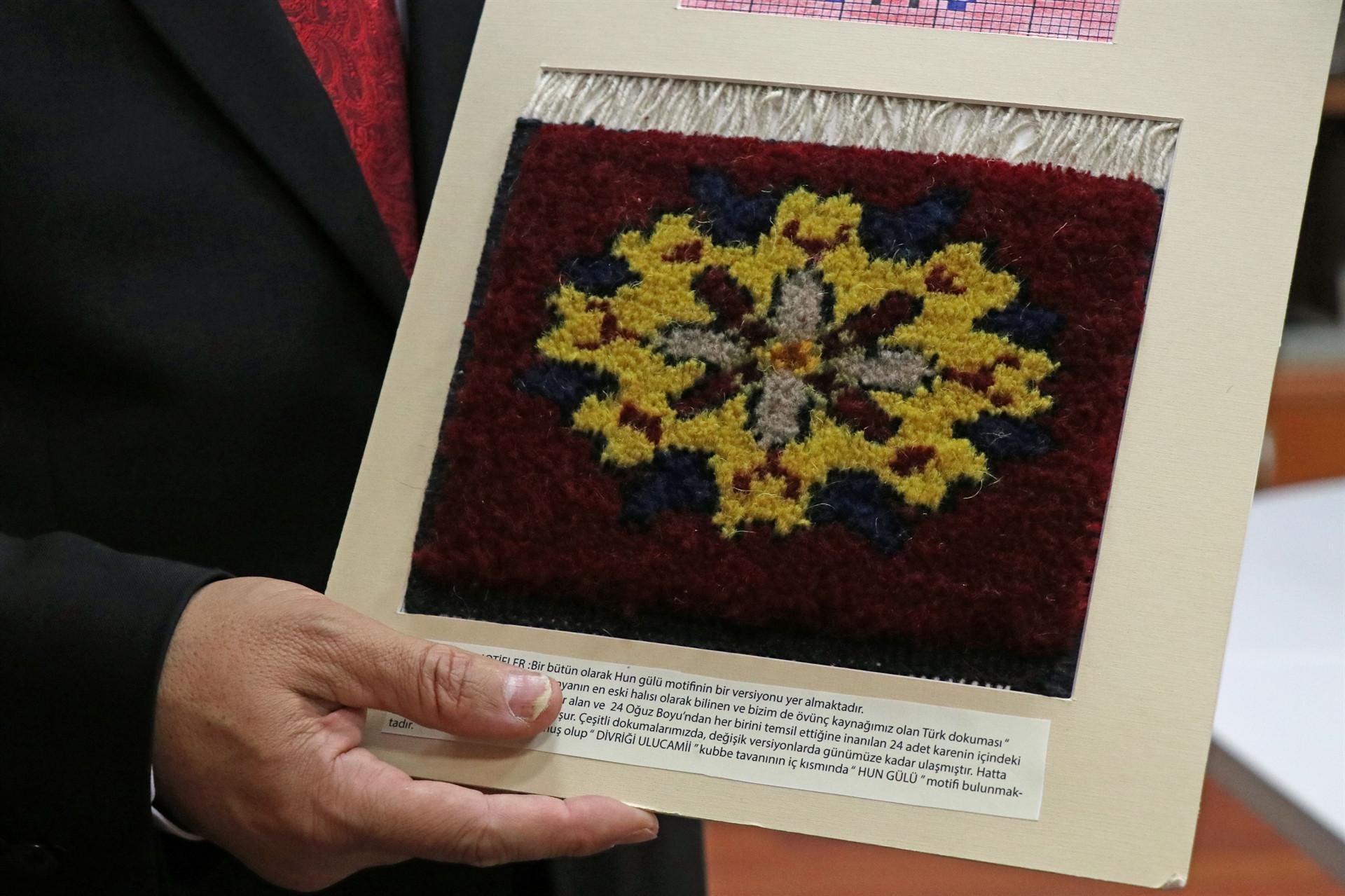Anatolian women’s carpet design motifs researched, registered
KAYSERİ

AA Photo
Motifs that have been designed by women on the world-famous Bünyan and Yahyalı carpets for centuries have been researched by the Kayseri Maturity Institute and their meanings have been registered.
The carpet looms found in almost every house in the Bünyan and Yahyalı districts of the Central Anatolian province of Kayseri have long been forgotten due to the emergence of factory-produced carpets and the greater involvement of women in business life.
A project named “Wedding of Knots” was prepared by the institute in order to register the carpet motifs to the country’s collective memory and to pass them down to the next generations.
A team of six people researched the types of motifs and their meanings in carpets woven in Yahyalı and Bünyan for two years within the scope of the project.
Some 24 motifs were recorded as a result of the research.
History teacher Zühtü Ulusoy, who worked in the research unit of the institute, said that carpet and rug weaving is the national art of Turks.
Ulusoy said that for centuries young girls and women have processed their feelings, thoughts, fears and expectations on the carpets.
Noting that these feelings are sometimes expressed with a tree, sometimes with flowers or a symbol, Ulusoy also stated that they learned that the historical carpets were sold for 200 liras as wood in Bünyan.
Pointing out that Pazırık carpet, known as the oldest carpet in the world, is woven with a Turkish knot, he said that carpet weaving tradition of Turks dates back 2,500 years ago.
“Other nations want to claim this [Pazırık carpet], but the fact that the weavings are Gördes Turkish knot shows that the carpet is Turkish carpet. It is also another indication that the tails of the horses in Pazırık carpet are knotted like in the Turkish ceremony,” he added.
Ulusoy also explained how the carpet motifs that disappeared were immortalized and recorded.
“We took photos from the shopkeepers and the staff in the design graphic section transferred the motifs to the paper. Then the motifs were woven on small carpet looms,” he said.
“The motifs on Yahyalı carpets were transferred from mother to daughter and from memory to memory. Motifs reflect the Yörük Turkmen culture. Weft, loop and everything of Yahyalı carpets are made of pure wool. Yahyalı is a more tight-knit place, so it is not affected by its surroundings in carpet motifs,” he noted.
“Bünyan is a more open region. Here we can see the effect of carpet motifs at that time in Istanbul. There are Armenian carpet weavers who went to the palaces in Istanbul. They somehow transferred the motifs they acquired to Bünyan,” he added.
Ulusoy said that the tree of life motif embroidered on the carpets tells about the long life, the universe and eternity, while the birds embroidered around it express the spirited souls.
The town of Bünyan is most famous for carpets, while Yahyalı is most renowned for rugs.
Rugs woven in finely knotted floral patterns retain a centuries-old tradition and locally produced items can be purchased only from carpet shops in Turkey.

















